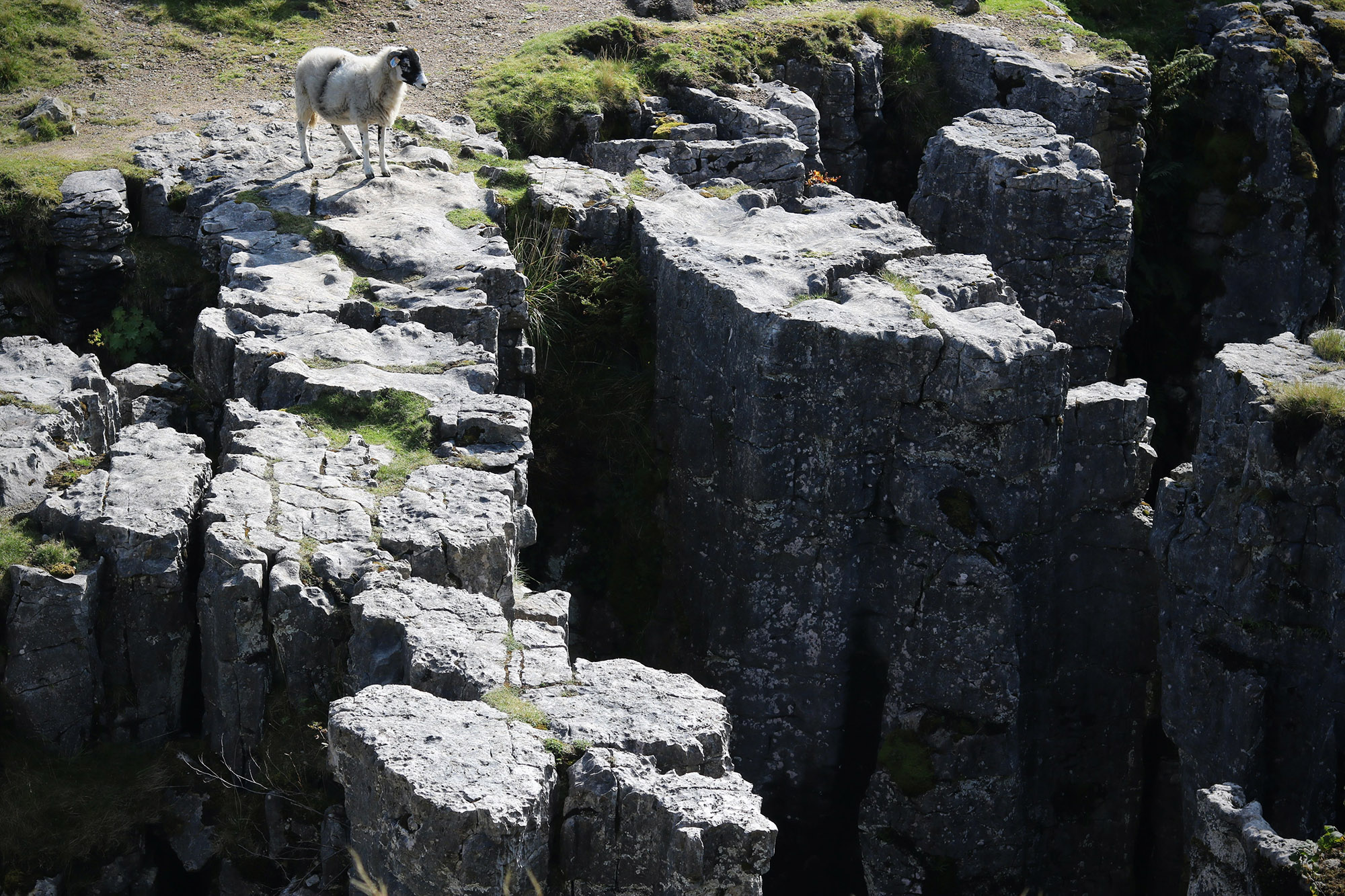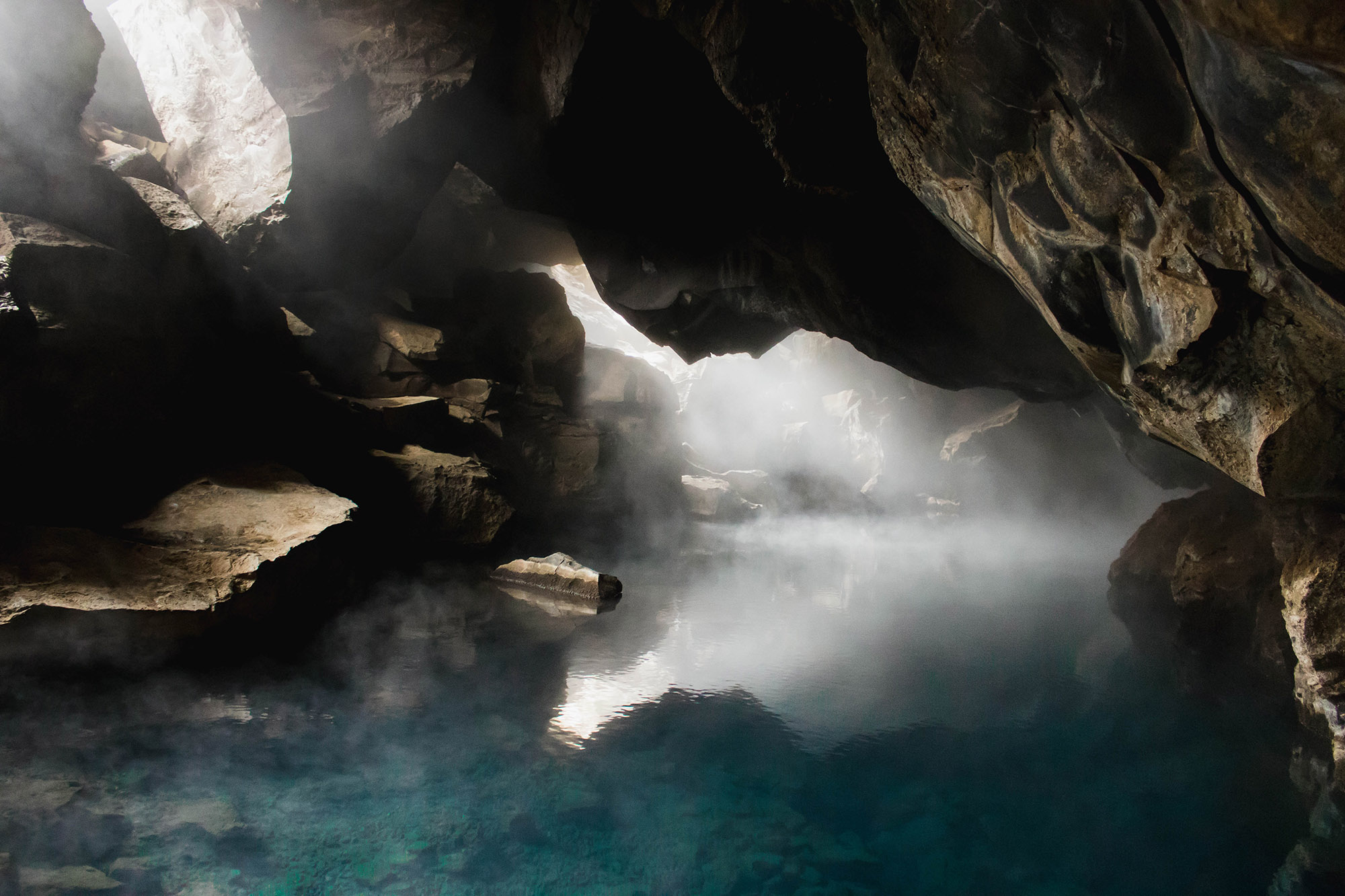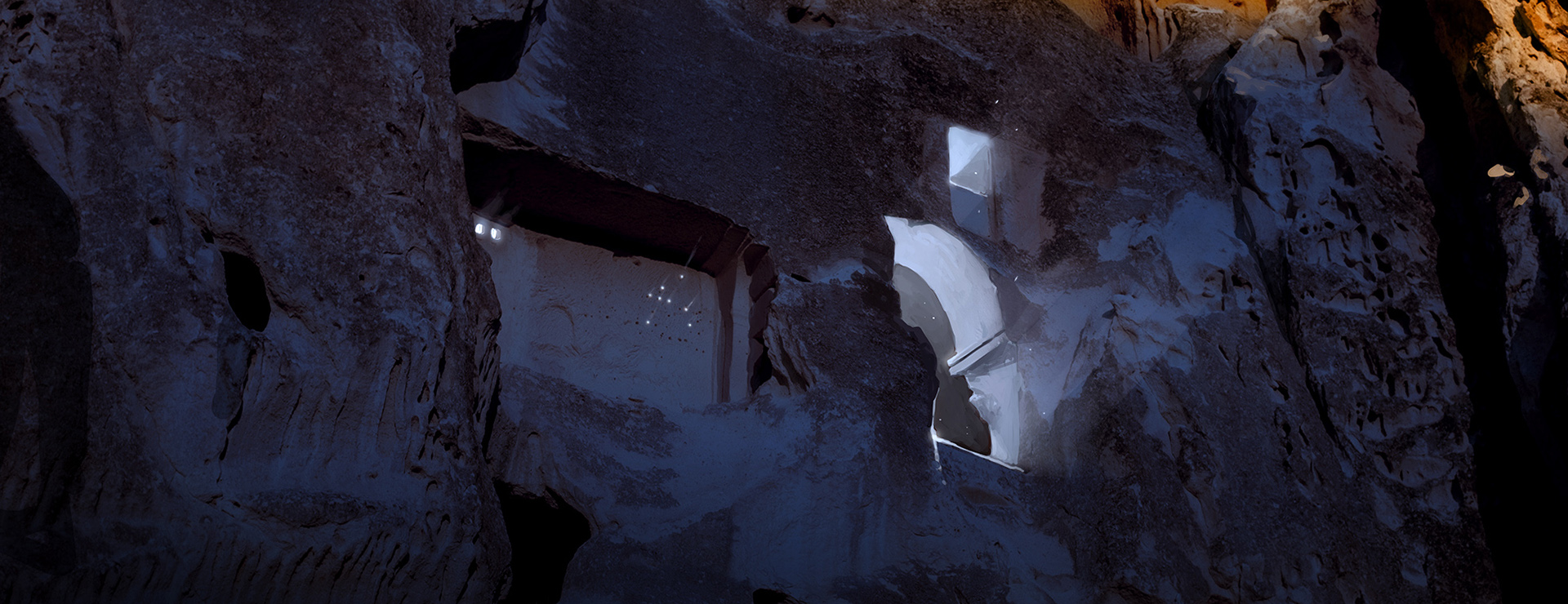Jianin (/tɕjɛnin/)
Jianin is a subterranean village at the eastern border of Asura and overlooks the Rift. The 141-years-old village has a population of 357 and a total area of 6.27 km2. The total farmland for the production of crops and grazing of livestock above ground is 5.01 km2.
The Rift provides an inexhaustible source of thermal energy to provide warmth, allow crops to grow despite the harsh climate, and even generate electricity. A complex network of ventilation protects the village from toxic gases sometimes released from the Rift. Water comes entirely from perennial underground springs as the region experiences relatively low precipitation. In the past, a large lake was located where the village is today but was drained by tectonic movements during the Continental Unit Rupture Event (CURE)–which created the Rift–leaving a lacustrine plain. The soil within this plain is fertile due to sedimentation. In fact, the village is able to produce twice as much food as it requires, the surplus of which is traded with neighbouring villages.
Contents

 Many were dying from the corruption even if it did not turn them, and one of them was Pabri's mother. When she passed away, Pabri held a vigil for two days and two nights. On the last night, he fell asleep from exhaustion and dreamt.
Many were dying from the corruption even if it did not turn them, and one of them was Pabri's mother. When she passed away, Pabri held a vigil for two days and two nights. On the last night, he fell asleep from exhaustion and dreamt.

Tunnels of mysterious origins by Bradley Dunn
Ancient Labyrinth
Although the village itself is 141 years old, the older sections of the subterranean tunnels date back as far as the Second Age. Not enough data is available to discern their initial usage or even who constructed them. It is possible that the villagers had uncovered a small section of a much larger system, though no further discovery has been made, likely because of seismic activity in areas surrounding the Rift. One of the tunnels drops off into the Rift, indicating that the tunnels may continue on the other side of the chasm. Obviously, this cannot be proven, but if it is true, then the tunnels were constructed prior to the CURE, making it at least 2500 years old. The tunnels are not the only relic to be found here. The village's altar, there contains a large, metal mechanism. It is approximately 4 metres in height and appears to be a section torn out of a larger mechanism. This artefact may date to the CURE as well and could provide insights into the severity of technological degradation in the wake of the Third Apocalypse. However, the villagers, who have incorporated the device into their religious ceremonies, have vehemently prevented further examination, concluding in an abrupt cut to the expedition's length.Nomadic Origins
Fortunately, this occurred prior to the Archive's investigation of the village's origins. Even so, the village elders were reluctant to reveal their history despite assurances of secrecy by means of the Institution's academic sanctuary. They claim to be scions of a nomadic tribe called the Laanites. This may be proof of the Asuran progenitor house theory, which proposes that all the nomadic houses in Asura, including those belonging to the Zovharkanhui, are branches of the same house.Paradise
According to their oral tradition, Jianin was founded by a goatherder named Pabri. He and his family led their animals across the continent to whichever land was hospitable during the time of the year, depending on the thread cycle. After weeks of travel, they came across a swathe of healthy land with woods brimming with berries, grass for the goats and horses, and streams filled with fish. Others had found this paradise and some even broke tradition by building wooden huts. At night, they gathered around shared firepits, talking of the bounty they'd discovered and whispering about settling. They would have to leave before the period of safety came to a close, but another day could do no harm. After all, the Cradle (a thread now called the Minor Ejder) was forgiving. It always came slower than it should.The dark brought the moon and peaceful silence. It was broken by the screams of the animals. The screams of people joined soon after as the lightstorm ripped through the camp, corrupting humans and animals alike.Eserlite rained from the sky, coating the writhing, contorting bodies like volcanic ash, and soft grass hardened into crystal. The Cradle towered over them, a swirling column of light slicing the sky in half.
Dreams and Deaths
Pabri fled with the rest of the survivors beneath the glint of stars. Daylight brought little safety. They were hunted by children of light, some still bearing the faces of people they loved. The safety of the north was barred by the mighty Indigo Vein, the west they had just escaped, and the south promised only the everlasting winter, leaving only the eastern plains. While grass for the animals to graze was plentiful there, the soft clay and silt of ancient lakes beneath could not protect them from the lightstorm creeping at their heels. The travellers reached the Rift and could go no further.

The Rift (on the Asuran side) by Tim Johnson
Lifting into the sky was a vast boat of dancing silver, with massive sails that drank sunlight. As the forebearer watched... his body splits open. Looking into (himself), he falls and is swallowed by a pool of blood*. A giant's hand catches the pieces of his body, makes them whole and sets him on the edge of a cliff. Like a great serpent, the hand withdraws into the ground, leaving a monolith.When Pabri woke, he set out in search of the stone. With last of their strength, they pushed southwards along the Rift and found a mound of boulders, which, pushed aside, revealed a tunnel. The chambers below gave them long-sought shelter at, solid granite that blocked the worst of the lightstorms.
Modern Times
The village was formed by those who chose to remain there. It is hard to determine what exactly they interpret the dream as, but it is clear they believe they were meant to discover this place. The complex tunnels seen today were built many generations afterwards. Cahanar Xue is a notable figure for the village. He apprenticed with an electrician on the East Coast and was responsible for the village's generation of electricity.Government
Given its isolation, the village is not under the sovereignty of any state. There is no official governing body, but decisions that affect the entire village require the permission of the village elders, and they, in turn, take advice from the 'holy one,' the religious leader within Jianin. It is also the village elders who decide how crime is punished; however, crimes are a rare occurrence due to the tightly-knit nature of their community.
A 'Holy One' by Stéphane Hermellin
Industry & Trade
Most of the villagers are farmers, working the day on the flat plains where they grow kaniwa, quinoa, celery, and lettuce. Hedges of raspberries, strawberries and blueberries grow naturally in the wild and provide a secondary food source. Due to the fertility of the soil, the village is able to produce far more food than it requires. Food is preserved in a variety of methods for consumption during winter months: berries are made into jams, meat is made into jerky, and lettuce are fermented (a common dessert in the region is fermented lettuce with strawberry jam). Even so, a large quantity remains and during the less severe periods of the thread-cycle is traded with neighbouring villages and even to the East Coast for electronic devices and other manufactured items. Recently, a radio was acquired and the villagers gathers in the evenings to listen to news from distant lands and music in unfamiliar languages.
Infrastructure
Tunnels
As most of the village is underground, its "roads" are tunnels cut into the limestone. They are 6 by 6 metres wide at the maximum and 1 by 2 metres at the minimum, paved with slabs of clay tiles. There are three main tunnels, one leading from the main entrance into the Gathering Chamber, one leading to the altar and one to the residential rooms. Multiple tunnels split from the Gathering Chamber.Electricity
Almost all the rooms are lit by electric lights. Water is boiled by the heat from the Rift into steam, powering a turbine that generates electricity, passed through the cooling chamber where it returns back to water and trickles back into the boiling chamber in a self-sustaining cycle.Ventilation & Sewers
The ventilation system is a series of narrow tunnels connected or adjacent to the underground chambers, designed to allow continuous airflow and to keep the subterranean section of the village at a moderate temperature throughout the year. It also plays a significant role in preventing the build-up of carbon dioxide gas and other toxic gases such as sulfur dioxide, hydrogen sulfide and hydrogen halides in the subterranean chambers. For this reason, the village is spread out horizontally, with only two levels, the lower of which is used only for storage. Additionally, the windows which peer out into the chasm that the village has become famous for are far and few, and can be sealed in case of the sudden release of gases. Similarly, the sewers are a system of tunnels used to dispose waste straight into the Rift.Jianin at night by Dmitriy Frantsev
*The literal phrase was 'fall into the red,' which could refer to a various number of things in Asuran prose, such as lava or the flesh affinity, but falling into a pool of blood fits the context best.

Underground spring in Jianin by Adam Bixby
Demographics*
61 children were aged between 0 - 18, 246 adults aged between 19 - 60 and 36 who were older than 60. 36% of the population work as farmers, goatherders, or poulters. 25% are labourers or woodcutters. Even those with leading roles within the community are required to take a job. Children generally start working from a young age, with labourers as young as 10. Children are required to take up the monk's robe for two years before being accepted as adults and a select number keeps the role into adulthood.Geography
Lacustrine Plains- Elevation: 187 m above sea level
- Distance from the Marine Coast: 620 km
Climate
Taiga- Avg. Temperature: 4 °C
- Avg. Precipitation: 376 mm/year
- Avg. Snowfall: 2.70 m/year
- Seasons: Summer, Winter, Fall, Spring
- Prevailing Winds: East to west
Resources
- Trees: Spruce (20%), Aspen (14%), Pine (34%), Hemlock (19%), Walnut (13%)
- Stone: Limestone, Granite, Sandstone, Travertine
- Ore & Gems: Nickel
- Cultivated Crops: Raspberries, Strawberries, Blueberries, Kaniwa, Quinoa, Celery, Lettuce
- Livestock: Goats, Chickens
- Wild Animals: Rat, Mice, Ferret, Boar
Remove these ads. Join the Worldbuilders Guild











Definitely need good ventilation when you live underground! o,o Sounds like a neat place to visit if you're not afraid of cramped spaces.
Too low they build who build beneath the stars - Edward Young
Thank you for reading! Definitely not somewhere claustrophobe would live, I agree :)